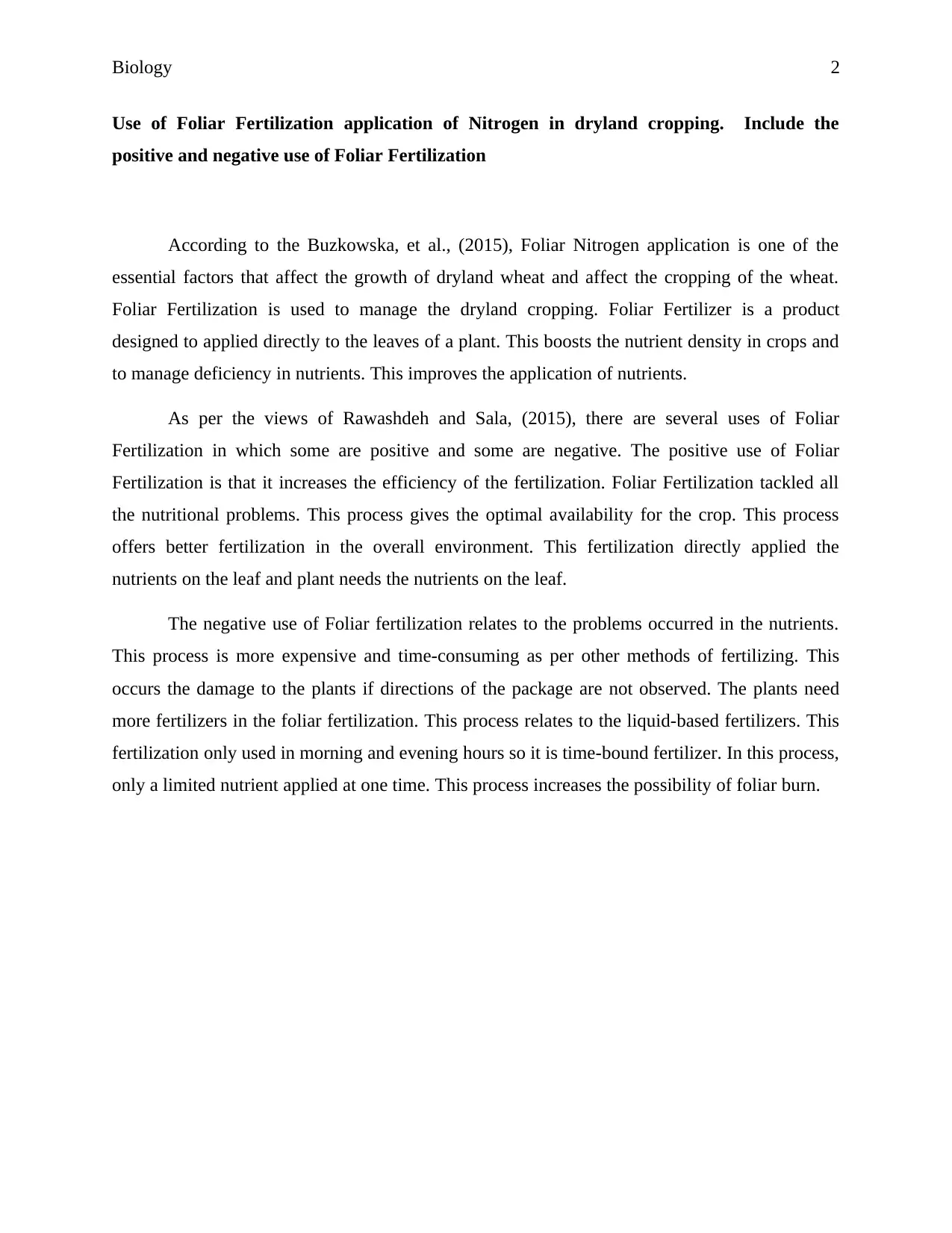Foliar Fertilization: Nitrogen Application in Dryland Cropping
VerifiedAdded on 2022/08/27
|4
|392
|17
Homework Assignment
AI Summary
This assignment delves into the application of foliar fertilization, particularly in the context of dryland cropping, with a focus on wheat. It examines both the positive and negative aspects of this fertilization method. The assignment references Buczkowska, et al. (2015) to highlight foliar nitrogen's impact on wheat growth and the management of dryland cropping. It defines foliar fertilization as the direct application of nutrients to plant leaves to boost nutrient density and address deficiencies. Furthermore, the assignment references Rawashdeh and Sala (2015) to explore various uses of foliar fertilization. The benefits include increased fertilization efficiency, addressing nutritional problems, and optimal nutrient availability. The drawbacks include increased cost and time consumption, potential for plant damage if instructions are not followed, the need for more fertilizers, time-bound application, limited nutrient application at a time, and the possibility of foliar burn. The assignment provides a comprehensive overview of foliar fertilization, covering its practical applications, advantages, and disadvantages.
1 out of 4




